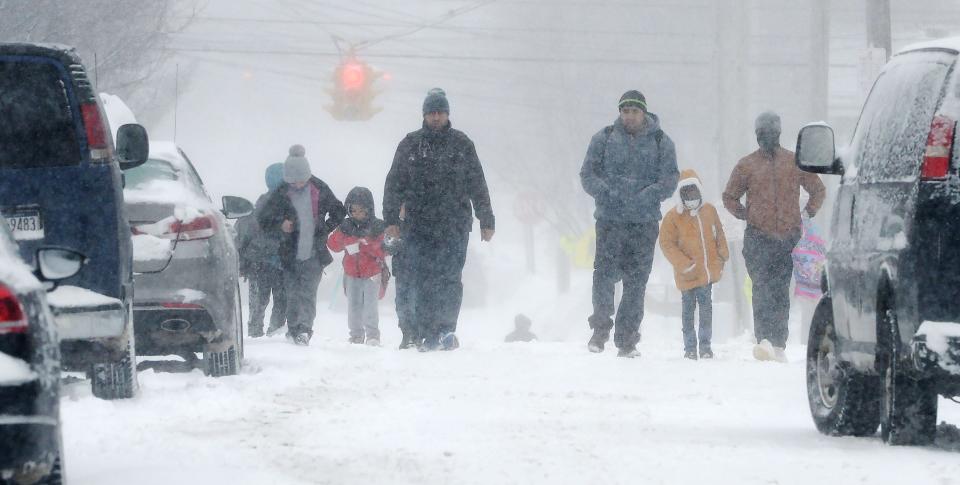Latest winter storm brings potential for frostbite, hypothermia. Who is at higher risk?
Dr. Wayne Jones saw the effects of Erie's last brutal cold snap Dec. 23-24 2022, when wind chills at Erie International Airport dropped to minus-30.
Patients suffered frostbite so severe that it took months for them to recover, said Jones, a former Saint Vincent Hospital emergency physician who is now medical director of the Erie hospital's wound clinic.
"The frostbite we saw in certain cases then were like severe burns," Jones said. "These patients had muscle and bone injuries where they had to have all the dead tissue removed and the wound sewn closed."

A winter storm was set to arrive in northwestern Pennsylvania late Friday, followed by the season's first arctic air mass that is forecast to send wind chills below zero Sunday night into early Monday morning, according to the National Weather Service.
Though the weather isn't expected to be as frigid as it was during the December 2022 storm, those who venture outside could develop frostbite within minutes on unprotected skin, said Dr. Kristin Juhasz, a UPMC Hamot emergency physician.
"At those wind chills, you're talking about five to 10 minutes before you see the first signs of frostbite on exposed extremities like your fingertips, ears and nose," Juhasz said.
Who is at higher risk for frostbite, hypothermia?
Certain people are more at risk for frostbite than others, including the very young, the very old, and those with diabetes and neuropathy. Children lose body heat faster than adults do, while older people and those with chronic health conditions often don't recognize how cold their feet and hands are getting.
Those who take drugs or drink alcohol also face a higher risk of frostbite and hypothermia, a medical emergency that occurs when the body loses heat faster than it can produce it.
"Besides influencing your decision making, being under the influence of drugs or alcohol also can make you feel warmer than you actually are," Juhasz said.
Symptoms for frostbite, hypothermia
Frostbite symptoms include:
White or grayish-yellow skin
Skin that feels firm or waxy
Numbness in the affected area
More: Hundreds still without power in Erie County. Are more strong winds, snow and cold on way?
Hypothermia symptoms include:
Shivering
Exhaustion
Confusion
Fumbling hands
Slurred speech
Memory loss
"If you see someone acting strangely in the cold, whether it's a neighbor or someone else, it's important to get them inside," Jones said.
Important tips for helping cold weather victims
Once inside, warm them by removing wet clothing and replacing it with dry clothes or blankets, and give them warm soup or nonalcoholic beverages.
Transport possible frostbite victims to an emergency department if you see blistering, especially in the fingertips, Juhasz said. Potential hypothermia victims should be taken to the ER is they show any of the previously mentioned symptoms.
Contact David Bruce at dbruce@timesnews.com. Follow him on X, formerly known as Twitter, @ETNBruce.
This article originally appeared on Erie Times-News: Frostbite, hypothermia rises in Erie as wind chills fall below zero

